
Photo Gallery (2)
Would you like to share your own photo’s of Iran here?
Just send it either to one of the email addresses below or simply post it on our FB page:
photo@visitiran.info
alireza.rahat@gmail.com
https://www.facebook.com/visitiran.info

Photo Gallery (1)
Would you like to share your own photo’s of Iran here?
Just send it either to one of the email addresses below or simply post it on our FB page:
photo@visitiran.info
alireza.rahat@gmail.com
https://www.facebook.com/visitiran.info
Kish Island – The Pearl of Persian Gulf
Kish Island, located in the Persian Gulf, is one of the most famous tourist attractions in Iran. This is mostly due to the natural attractions of the island, warm weather and the great variety of fun water activities and sports. The fact that visiting Kish requires no Visa for the tourists, has also had a big impact on making it one of the most visited regions of Iran.
With an average temperature of 27 degrees around the year, Kish is always associated with hot weather and for the people who want to escape the harsh cold weather of the northern provinces during the winter, Kish is one of the favorite destinations.
Taghe Bostan – Kermanshah
In the heart of Zagros mountains range and in just 5 kilometers of the Kermanshah city center, is a series of petroglyphs and rock engravings called Tagh-e-Bostan which date back to almost 1,700 years ago. Tagh-e-Bostan (or Taq Bostan), was the chosen site by the Sassanid kings for their sculptures, as it was located on the path of silk road and due to its beautiful nature continuously attracted a lot of visitors since its establishment up to now. Before this, the site surrounding Persepolis was used by the empires before Sassanid to create such monuments and sculptures.
Naghshe Jahan Square – Isfahan
Considered by many an impressive testimony to the significance of cultural life in Great Persia, Meydan e Naghshe Jahan (Naghshe Jahan Square), was built by Shah Abbas I the Great at the beginning of 17th century. The former name of the square was Shah Square which after the Iranian Islamic revolution of 1979 it was changed to Imam Square. However most people still know it as its historical name, Naghshe Jahan, which literally translates to “portrait of the world”.
The square itself is 160m wide and 560 meters long and is surrounded by historical buildings from the era of Safavid Dynasty.
Veresk Bridge – Savad Kooh
The Veresk Bridge in Iran was constructed during the reign of Reza Shah in 1936 and connects the railway between Tehran and the Caspian Sea region. It is located in Mazandaran’s Veresk district of Savad Kooh county, 85 kilometers south of Ghaemshahr. The bridge stands at 110m tall and its arch measures 66m long. It connects two of the mountains in the Abbas Abad region. The difficult terrain required 55 tunnels along a 309 mile (497 km) route. A temporary steel falsework was left below the bridge – probably to facilitate future maintenance of the arch.
The bridge is one of the masterpieces of the Danish engineering firm Kampsax, (consisting of mostly German and Austrian engineers) serving the Trans-Iranian Railway network in Northern Iran. It’s been said after finishing the bridge people had a fear that the train wouldn’t be able to pass the narrow bridge and that it will break. As a result the engineer and his family stood under it when the first train passed the bridge (local accounts claim that Reza Shah had asked them to do so anyway).
Visitiran’s Rule Book for joining
Anyone can join visitIran’s team (click here for a current list of the team). You just need to submit your first article to this email for approval and after that you will recieve a writer’s account in the site to be able to publish your articles directly. However every teamwork requires a set of rules and guidelines. Here is ours to ensure the quality of the articles are satisfactory for our readers.
1- No copy pasted material! It is definitely possible to use other sources in writing your article however they should be referenced accordingly.
2- It is not required (however highly appreciated) to submit photos for your article. One of our editors can help you with finding the appropriate photo before publishing it.
3- VisitIran has the right not to publish the articles that are of unsatisfactory quality.
Interested in joining the team? just click here and leave us your email!
The shaking minarets of Isfahan
In one of the best known cities of Iran by the tourists, Isfahan, there is a monument which is considered an architectural wonder. However this is not due to the fancy shape or design of the building, rather due to its shaking minarets!
Monar Jonban (the shaking minarets) is a monument in Isfahan dedicated to Amu Abdollah, who was considered a great Sheikh of his time.
World’s oldest church (probably!)
The church of “Naneh Maryam” (which mean Mother Mary in Farsi), is one of the oldest churches of the world and is located in Urmia, northwest of Iran.
It is believed by the locals that Naneh Maryam church is either the oldest church in the world, or the second oldest right after the great church of Bethlehem in Palestine. This church is historically traced back as far as the year 32AD. In the past centuries, Naneh Maryam church has also been used as a cemetery.
Before building a church, this location has been the site of a Zoroastrian fire temple. As the story goes, upon the birth of Jesus, the Zoroastrian priests of this temple saw a shooting star in the sky and believed that this shooting star was the birth sign of the promised savior. Therefore they started their journey towards Jerusalem in the hope of finding the truth. In Jerusalem, they converted to Christianity and upon returning, converted the fire temple to a church.
Mausoleum of Omar Khayyam – Neyshabur
Khayyám (1048 – 1131) was a Persian poet, mathematician, astronomer and philosopher. His contributions to science is considered to be much ahead of its time. However what made his name eternal, are his poems.
“The Moving Finger writes; and, having writ,
Moves on: nor all thy Piety nor Wit
Shall lure it back to cancel half a Line,
Nor all thy Tears wash out a Word of it.”
Khayyám was born in Nishapur, located in the northeast of Iran. This is also were he died and was eventually buried. His poems have been translated in many languages and are appreciated by scholars around the world. Some even consider him the most famous poet of east in the west.
Milad Tower – Tehran
There is one structure in Tehran that can be seen from almost anywhere in the city, and that is the Milad Tower (or as it is called in Persian: Borje Milad). This staggering 435 meters high multipurpose tower was constructed from 2000 till 2009.
Being the 6th tallest tower in the world, Borje Milad has become a well-known tourist attraction in Tehran.
The lobby structure of Milad Tower has 6 floors, accommodating many food courts and trade units.
As mentioned before, Borje Milad is a multipurpose tower; besides telecommunication uses, it also includes a rotating sky restaurant and is used as a convention, exhibition and conference center (a nearby building in the same complex).
Ali Sadr Watercave – Hamedan
Ali Sadr near Hamedan (about 80km from the city) is the world’s largest water cave. For many years the exploration of the cave progressed slowly. It was only in 2001 that with the help of a German/British expedition, a great progress was made in surveying 11 kilometers of the cave. However the exploration of Ali Sadr is still an ongoing process and it is said that the end of the cave is yet to be found. This exploration is made even more difficult by the many different routes that the cave has. Some of which end in dry land or a lake at great deeps.
As the name “water cave” suggests, the cave is mostly filled with water from a nearby spring. This has created a great opportunity for boat rides in the cave for the tourists and visitors. The boats are linked together with a rope to avoid going off track and getting lost. The first boat in each group is a paddle boat with the guide that pulls the other boats. If you seat in one of the following boats, you can just seat back and enjoy the view.
Tochal Ski Resort – Tehran
Most travelers visit Iran for the historical sites and to experience rich traditions. However for the winter visitors, there is the opportunity of riding the longest gondola lift to one of the most famous Iranian’s ski resorts.
Tochal Telecabin, located in the north of Tehran, is said to have the longest gondola lift lines with a length of almost 7500 meters. The construction of this telecabin took place back in 1974 with cooperation with a French and Austrian company.
Even though this telecabin was originally built for reaching the ski resort at an altitude of more than 3740 meters, it was soon being used for other recreational activities on the mountain top as well. Besides the ski season, you can ride the gondola lift to the top to enjoy the view and watch the mountain climbers climbing their way up to the peak from the very early hours of the day.
The Zoroastrian Fire Temple of Yazd
In the heart of Iran, city of Yazd, is a Zoroastrian temple with a burning sacred fire since 1,500 years ago.
City of Yazd, which is located in the province of the same name, is famous for its unique architecture due to centuries of adaptation to the harsh desert weather. It is also considered one of the main Zoroastrian centers of the world.
Zoroastrianism is one of the world’s oldest religions and the official religion of the pre-Islamic Iranian empires. Zoroastrianism is based on three main principles: Good Thoughts, Good Words, Good Deeds.
The main building of this temple is 21 meters tall and is decorated with a Faravahar relief on the main façade. Faravahar is the well-known sign of Zoroastrianism and is said to be the depiction of Fravashi, which is a Zoroastrian concept referring to the spirit of any individual throughout the history and in the eternity. The current building was built in the year 1934 by a small Zoroastrian community in the city.
Azadi Tower – Tehran
Nowruz – The Persian New Year
What is Nowruz?
 Of all the Persian national festivals, the New Year celebrations are at once the most important and the most colorful. This festival embodies a wealth of ancient rites and customs, and is about the only one in Persia which is not confined to the traditions of only one religious group. It symbolizes that continuity of the ancient Persian culture which has survived so many adversities and vicissitudes.
Of all the Persian national festivals, the New Year celebrations are at once the most important and the most colorful. This festival embodies a wealth of ancient rites and customs, and is about the only one in Persia which is not confined to the traditions of only one religious group. It symbolizes that continuity of the ancient Persian culture which has survived so many adversities and vicissitudes.
In harmony with the rebirth of nature, Nowruz always begins on the first day of spring marked by vernal equinox, or Tahvil. On that day -which may occur on March 20 – 21 or 22 – the sun crosses the celestial equator.
As far back as records go, Nowruz has been, either in fact or by intention, a celebration of early spring, when the sun begins to regain strength and overcome winter’s cold and darkness and when there is a renewal of growth and vigor in nature. Zoroastar’s people were demonstrably animatists, that is, they apprehended a cognitive spirit, mainyu, in all things, tangible or intangible. So for them this return of spring would have represented an annual victory for the spirit of the sun; and Zoroaster saw in it also, it appears, the symbol of a still more glorious victory to come. This was the special hope which he offered his followers, that the present struggle between good and evil, on all planes, physical, moral and spiritual, will end in total victory for the good.
The Team behind VisitIran.info
VisitIran.info is the endeavour of Iranian students and expats around the world. As a non-commercial collective website, VisitIran.info requires all the helps it can get from the Iran-enthusiasts. We are countinously looking for article submissions and new team members.
Currently our team consists of the following people (sorted by the number of posts submitted) :
Alireza Rahat – Nationality: Iranian – currently living in the Netherlands. (9 posts + support)
Masoumeh Dayan – Nationality: Iranian – currently living in the Netherlands. (2 posts)
Samaneh Rahat – Nationality: Iranian – currently living in Iran. (1 post)
Negar Mohammadi – Nationality: Iranian – currently living in France. (1 post)
Mehdi Rezayi – Nationality: Iranian – currently living in the UK. (1 post)
Peter David Jones – Nationality: Australian – currently living in the UK. (1 post)
Sahar Mazloumi – Nationality: Iranian – currently living in Germany. (1 post)
Nima Khansari – Nationality: Iranian – currently living in Canada. (external affairs and support)
Join Us Today! (Read the rule book here)
نیازمند یاری شما هموطن عزیزهستیم!
ویزیت ایران دات اینفو – پروژه ای است به منظور آشنایی درست و بیشتر گردشگران با زیبایی ها و شگفتی های کشور عزیزمان ایران. همانطور که میدانید رسانه های غربی تصاویر کاملا اشتباه و فریب انگیزی از ایران و ایرانی میدهند. همین موضوع باعث شده است تا تقریبا همه هموطنانی که در خارج از کشور هستند تجربه برخورد با افرادی را داشته باشند که ایران را سرزمینی ترسناک – منزوی و متنفر از جهان و جهانیان تلقی کرده اند. همچنین آنچه که در رسانه ها از ایران نشان داده میشود – اکثرا تصاویر راهپیمایی ها و تکابیر ضد غرب – شلوغی ها و ناآرامی ها و … است. و به ندرت دیده میشود که از زیبایی های این مهد تمدن سخن گفته شود.
به همین منظور ما – جمعی از دانشجویان ایرانی ساکن در خارج از کشور – بر آن شدیم تا وبسایتی با محتوای زیبایی های گردشگری ایران بسازیم تا نه تنها تلنگری بر صنعت گردشگری ایران زده باشیم – بلکه شاید بتوانیم قدم کوچکی در تصحیح تصویر غلط داده شده از کشور عزیزمان برداریم.
گفتنی است این وبسایت هیچگونه فعالیت سیاسی نخواهد داشت و هدف تنها معرفی زیبایی های ایران و ایرانی به دور از تاثیر هر دولت و حکومتی است.
تحقق هدف بزرگی که برای این وبسایت در نظر گرفته شده است تنها با همراهی شما دوست عزیز ممکن میگردد. کافی است تنها یک مقاله (به زبان انگلیسی) از یکی از دیدنی های ایران عزیزمان ارسال کنید تا با نام خودتان در سایت ثبت گردد. شاید که بتوانیم با کمک یکدیگر به همه نشان دهیم ایران رسانه ای با ایران حقیقی زمین تا آسمان فرق دارد!
هم اکنون به تیم ویزیت ایران دات اینفو بپیوندید. (لیست تیم)
وبسایت ویزیت ایران دات اینفو یک وبسایت غیرتجاری بوده و هیچگاه از آن برای کسب درآمد استفاده نخواهد شد. تمامی هزینه های این وبسایت توسط اعضا -علاقه مندان و بازدیدکنندگان به صورت اهدایی تامین میگردد.
کافی است ایمیل خود را از اینجا برای ما بفرستید تا به زودی با شما ارتباط برقرار شود.
Persepolis
“Takht-e Jamshid” or as it is called by the Greeks “Persepolis” is the name of one of the Iranians ancient cities. “City of Persians” or “Parsa” known to the ancient world as “The wealthiest city under the sun” was a ceremonial capital of the second Iranian dynasty, the Achaemenid Empire.
The construction of this capital began in 515-518 BCE by the King Darius the Great and was continued during the reign of his son, King Xerxes the Great and grandson King Artaxerxes I in an area of 125,000 square feet and was prosperous for about 200 years. It is also estimated that this construction with about 39 building had around 43600 residents.
Alexander the Great and the Greek army attacked Iran in 330 BCE and burned down the Persepolis and destroyed a vast number of books, culture and arts of the Achaemenid. At the moment the magnificent ruin of Persepolis is an archaeological site located in southern Iran (situated about 70 km northeast of the modern city of Shiraz in the Fars Province) and is one of the most artifact-rich archaeological sites in the world, called by UNESCO as a world heritage site.
Panorama of ruin of Persepolis
Arg-e-Bam (Bam, Kerman)
Arg-e-Bam was the largest adobe structure in the world. As the name suggests, this historical wonder is located in the city of Bam in the province of Kerman (Southeast of Iran). Unfortunately almost 80% of Arg-e-Bam was destroyed in the earthquake of December 26th 2003. But thanks to international aids and national determination, the historic site has been almost fully restored.





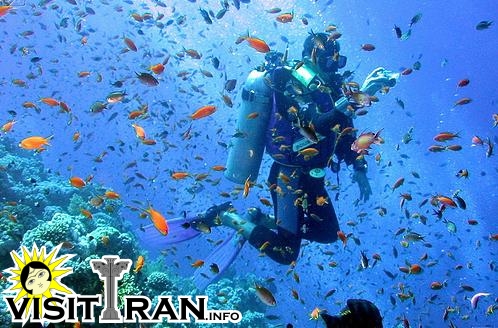

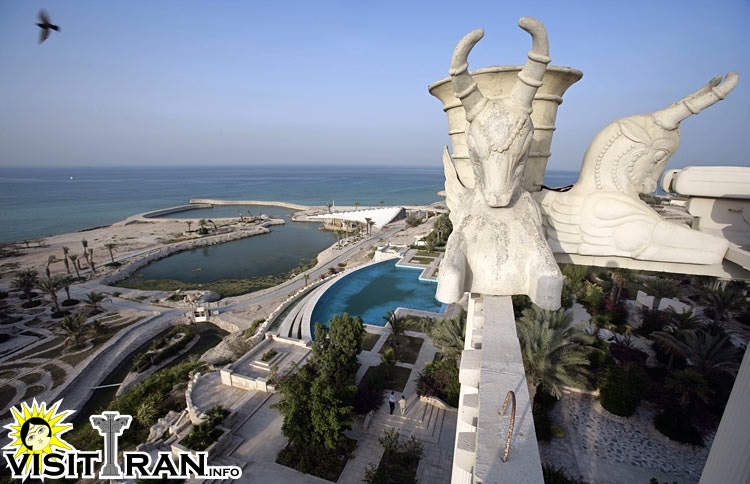

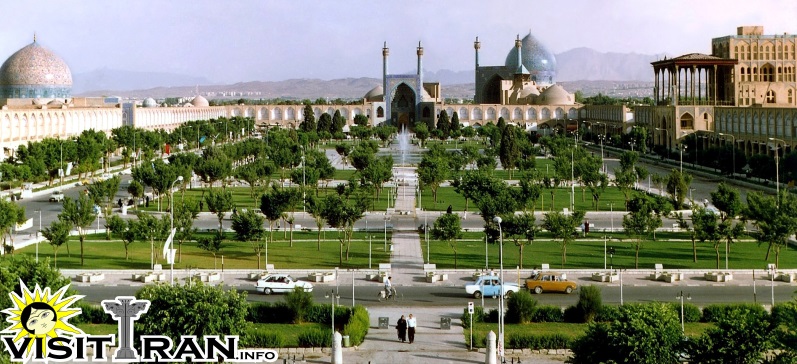







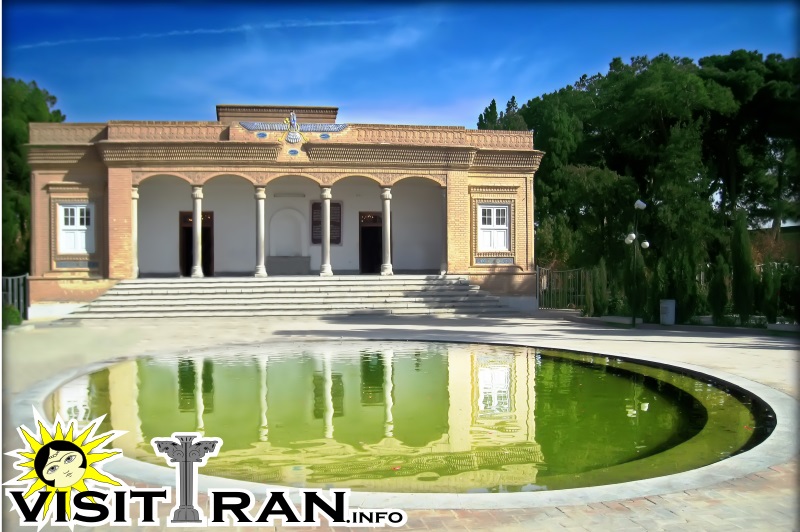


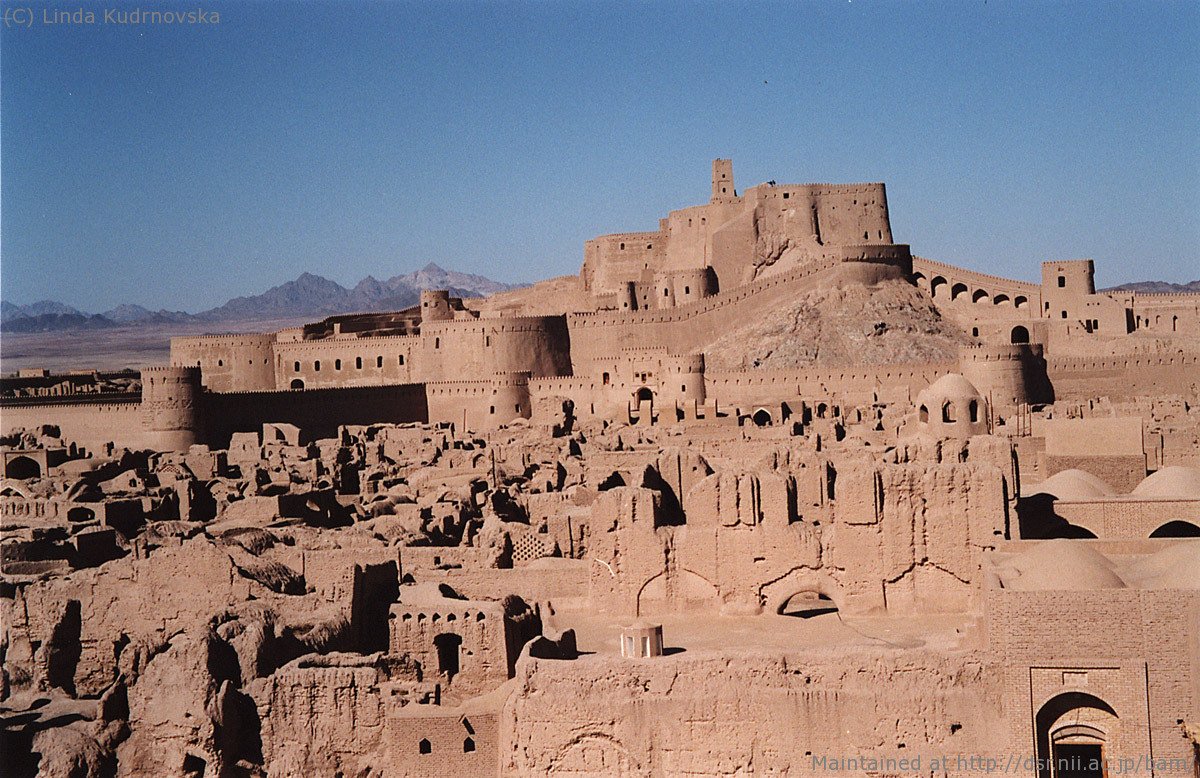
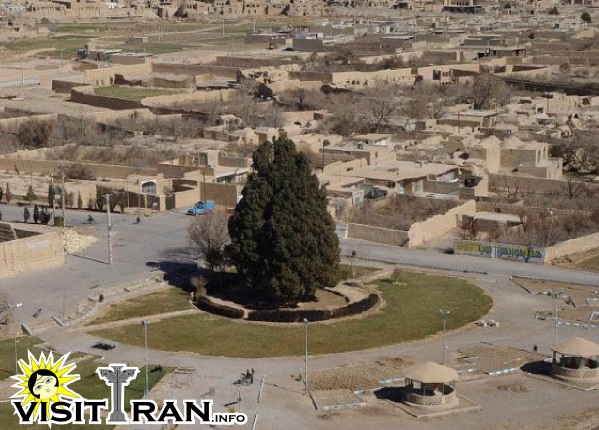
 D5 Creation
D5 Creation